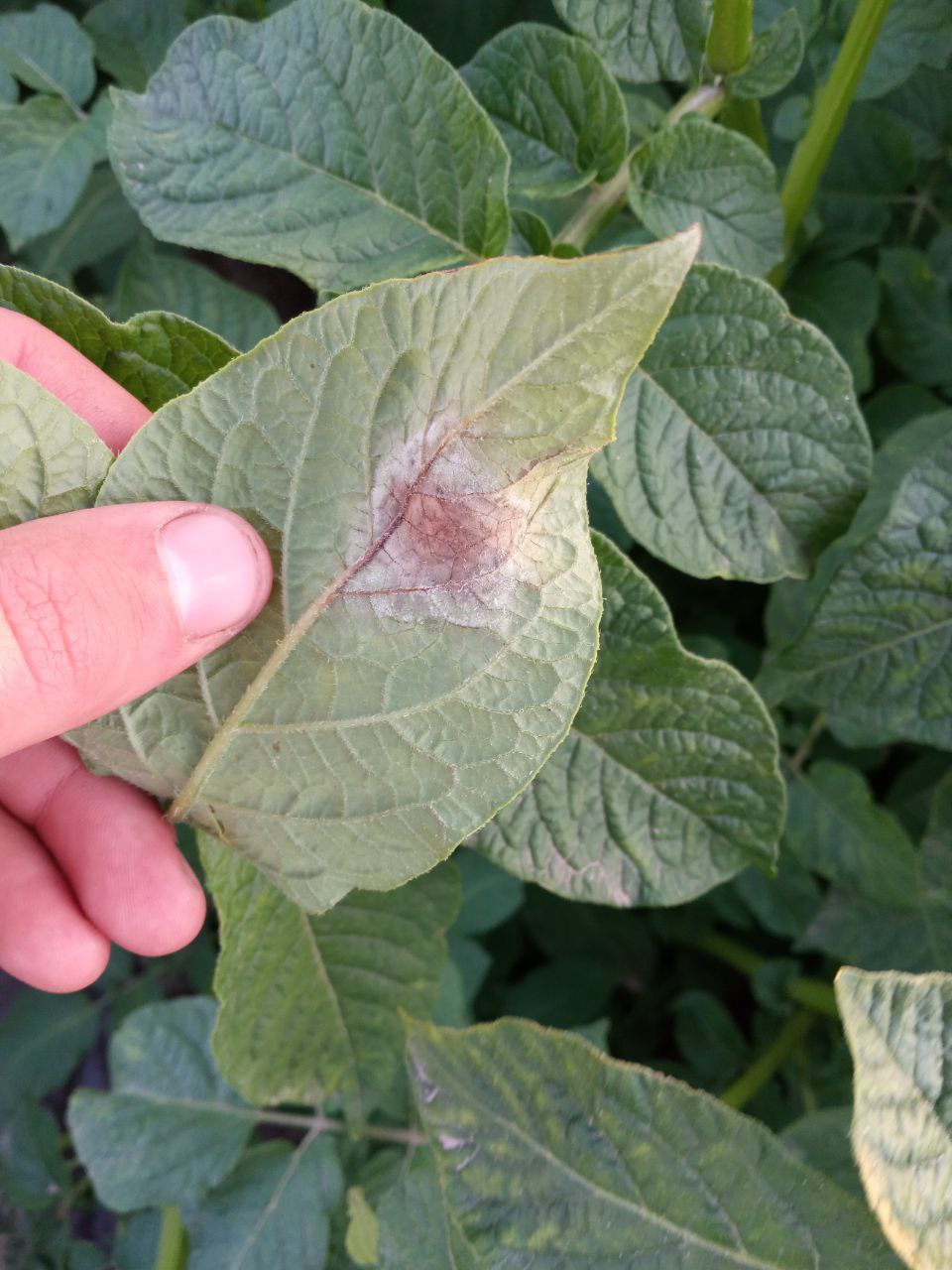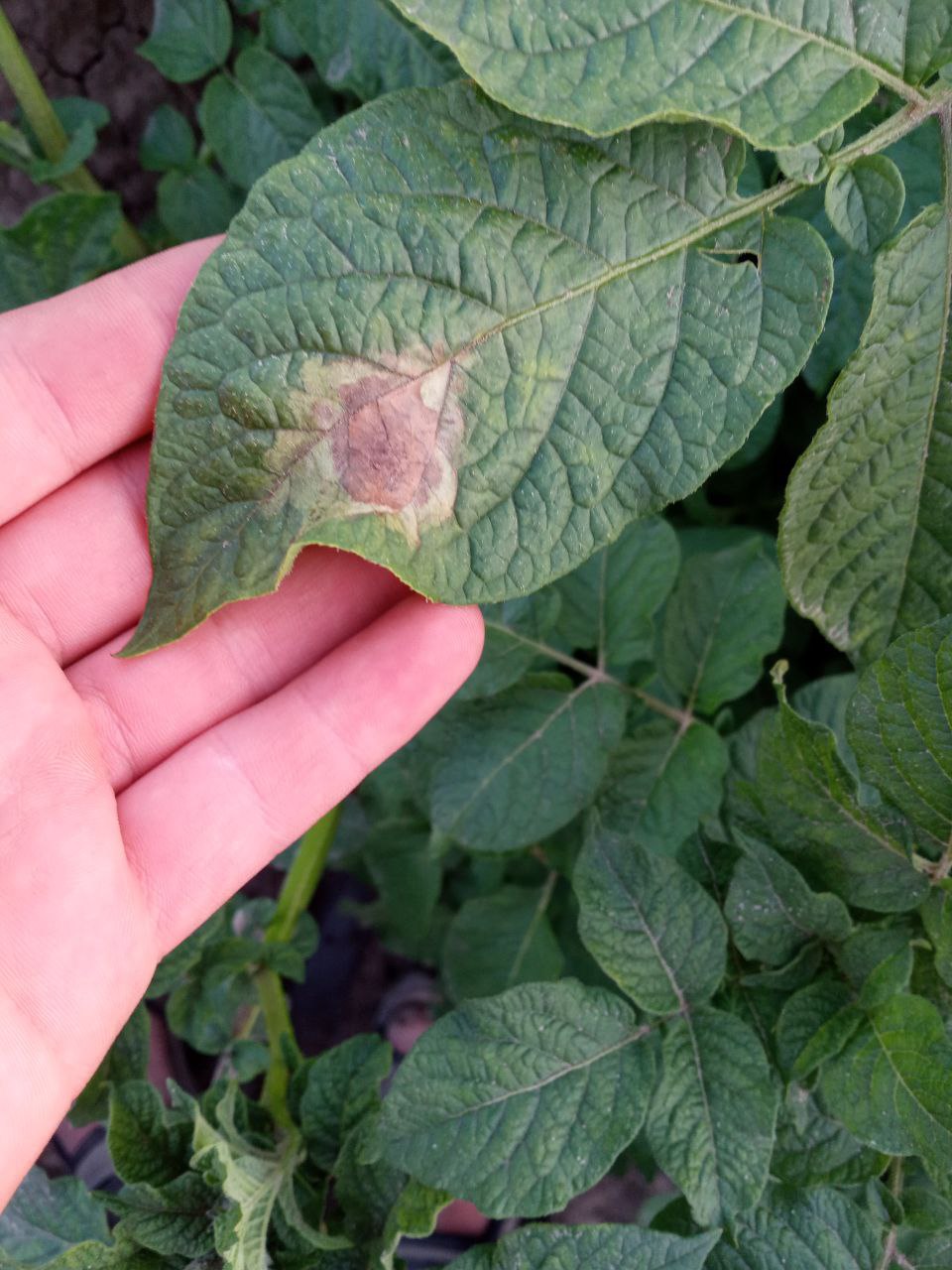Potato late blight: causes, symptoms and control methods
Late blight is one of the most common and harmful diseases of potatoes, which can cause significant yield losses. This disease is caused by the fungus Phytophthora infestans and can spread rapidly, especially in wet and warm weather. In this article, we will look at the causes of late blight, its main symptoms and control methods.
Causes of late blight

Late blight usually develops when certain conditions are combined.

The main factors contributing to the spread of the disease include
- A humid environment: the fungus Phytophthora infestans multiplies and spreads faster in wet weather. Periods of prolonged rainy or foggy weather favor the development of late blight;
- high temperature: high temperature promotes accelerated growth of the fungus and the development of the disease. The temperature from +20°C to +25°C is optimal for the development of late blight;
- presence of seed material affected by the disease: the use of infected seed potatoes can become a source of infection. Infected plants, plant residues, and potatoes left on the field after harvesting can become sources of fungal spores.
The main symptoms of late blight are:
- Leaf spots: The initial symptoms of late blight appear as moist, dark spots on the potato leaves. The spots may be yellow, brown or black;
- Facial plaques on potatoes: the infection can penetrate the potato fruit, resulting in brown or black facial plaques. During storage, these plaques can break down and turn into a slimy mass;
- wrinkles on the stems: the infection can also spread to the stems of the potato, resulting in wrinkles and dark spots;
- drying out of plants: affected plants begin to wilt and dry out after infection with late blight.
Methods of late blight control:
- use of healthy seed potatoes: ensuring the use of healthy seed materials is an important step in preventing late blight. Seed potatoes should be well cleaned and free from signs of disease;
- proper agronomic care: careful agronomic care, such as watering in moderation, ventilation, fertilization and proper plant placement.
Our recommendations on agronomic care methods:
Since late blight spores need to be in a humid and warm environment from +15°C to +25°C for at least 18 hours to germinate, we recommend watering at night for prevention. If you do not water during the day, the plant has time to dry out and there is less risk that the potatoes will get sick. It is advisable to introduce drip irrigation.
- use of fungicides: chemical fungicides can be effective in the fight against late blight. Regular treatment of plants during the growing season can help to contain the development of the disease;
Our recommendations for the use of drugs:
Systemic preparations. They are best applied before rain or conditions that will be favorable for late blight.
- RanmanTop 0.5-0.6 l/ha works for 10-12 days
- BanjoForte 1 liter/ha (Shirlan analog) works for 10-12 days
- Zorvek Incantia 0.5 l/ha (in our opinion, the most effective) works for 12-15 days
- Infinito 1.6 l/ha works for 12-15 days
Contact fertilizers. It is better to apply then after the rain, when the leaf dries and the risk of washing off is minimal.
- preparations based on the active ingredient mancozeb are best in combination with metaloxyl or cymoxanil
- preparations containing copper
- proper disposal of infected plants: it is important to properly dispose of infected plants and residues after harvesting to avoid the spread of the disease.
Late blight is a serious threat to the potato crop. Careful agronomic management, the use of healthy seed materials and timely application of control measures can help prevent the spread of the disease and preserve the yield.



